On a recent afternoon, Stanford students from the class Global Black Feminism helped give voice to some of the underrepresented Black women who fought for civil and women’s rights across the world.
From figures such as feminist scholar Barbara Smith, playwright Shirley Graham Du Bois and former Black Panther Party chairwoman Elaine Brown, students shared these women’s stories by inviting the public to get as close to the primary source as possible: viewing original items related to them from Stanford Libraries’ Special Collections.
Students welcomed community members to a special viewing at Green Library, where they had on display historical materials such as handwritten letters from writer and poet Audre Lorde, audio clips of civil rights organizer Fannie Lou Hamer, and interviews with such feminist scholars as Gloria Jean Watkins, who writes under the lowercased pseudonym bell hooks.
For sophomore Kiara Dunbar, viewing the original, historic materials brought the women’s stories and scholarship to life – which Dunbar and the other students in the class highlighted at the afternoon open house.
“It makes their work and just their existence more tangible,” said Dunbar, who is majoring in African & African American Studies (AAAS). “I don’t think people visit the archives very often and less so, for Black women. A lot of our work here is for people to get a holistic understanding of these black women and to place them in different time periods and give them a fuller image.”
Some of the other items on display included black-and-white portraits by Susanna Lucia Lamaina of Angela Davis and other activists, as well as photographs of the civil rights struggle from the Bob Fitch collection.
“I think that the way these women are able to navigate the world to build solidarity and community really teaches us how we can today also build similar community,” said Joel Swann, a senior majoring in communication.
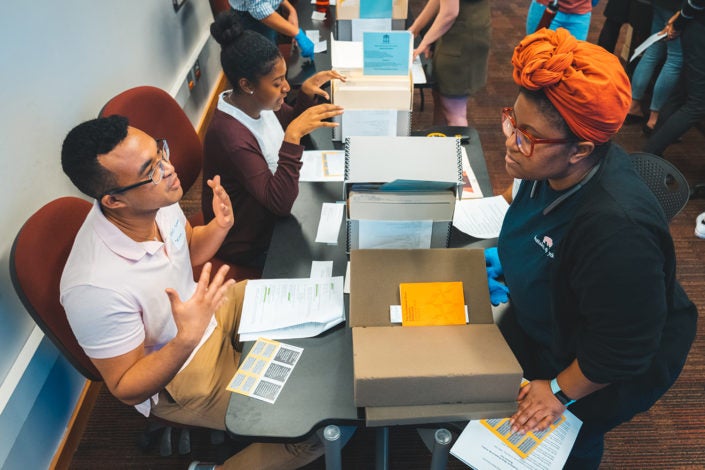
Joel Swann talks about items housed in Stanford Libraries’ Special Collections. (Image credit: Andrew Brodhead)
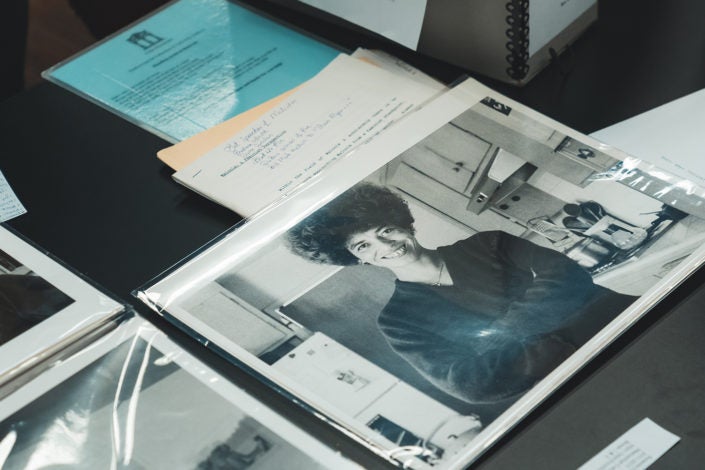
Some of the items on display included black-and-white portraits of activists, including Angela Davis, by Susanna Lucia Lamaina. (Image credit: Andrew Brodhead)
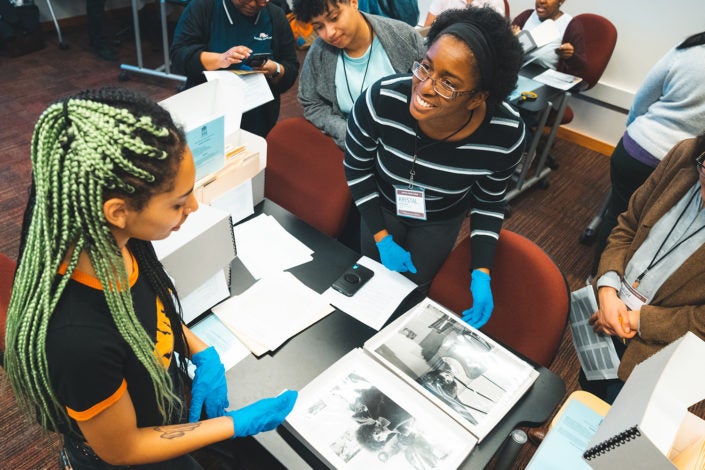
Nashira Black shows photographs by Susanna Lucia Lamaina. (Image credit: Andrew Brodhead)
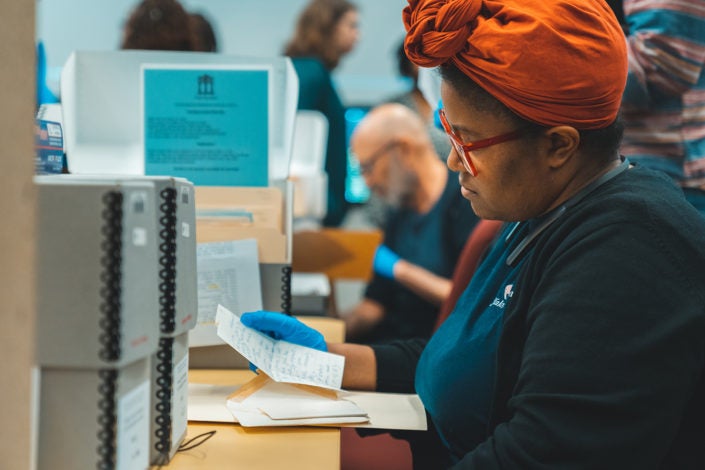
Members of the public were invited to view materials from Special Collections related to Black feminism in its local and international context. (Image credit: Andrew Brodhead)
Learning through the archive
The event was part of the undergraduate class Global Black Feminism taught by Jamele Watkins, a postdoctoral fellow in German Studies and in the Center for Comparative Studies in Race & Ethnicity.
Over the quarter, students examined the transnational aspects of Black feminism from the 1800s to the present day. Black women have traveled the globe for centuries but their stories go mostly unknown, Watkins said.
Engaging with the archive is a way to discover those untold stories.
Prior to the open house, students spent an afternoon at the library where they met with Kathleen Smith, a library curator, to learn more about how to use archives for research and what items were available to them as scholars.
Sophomore Haleigh Quinn’s favorite item in the Special Collections’ archive, and also on display at the event, was Around the World with Hershaw and Collins, a book written in 1938 by two African American women, Flaurience Sengstacke Collins and Fay McKeene Hershaw. Despite limitations of the era, they traveled the globe.
“They went everywhere,” said Quinn, who is a public policy major with a minor in AAAS. “That was really surprising to me because I didn’t even know that Black women had the means in the early 1900s to do this by themselves.”
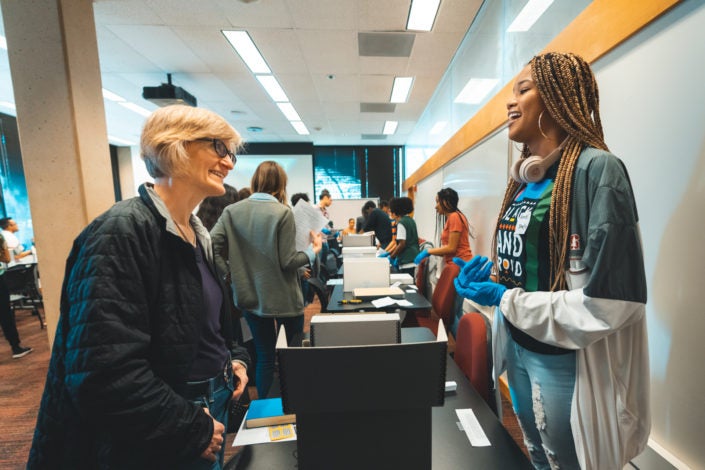
Stanford student Amiel Dixon talks to members of the public during an open house at Green Library, which displayed archival materials related to underrepresented Black women who fought for civil and women’s rights across the world. (Image credit: Andrew Brodhead)
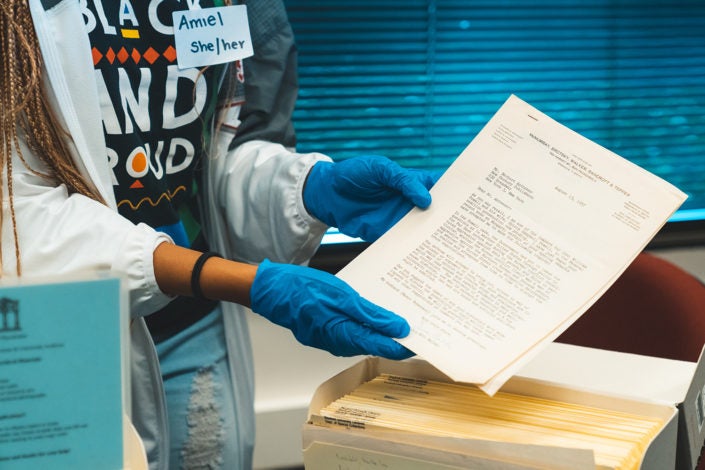
Amiel Dixon pulls out correspondence from the Herbert Apthekar papers. (Image credit: Andrew Brodhead)
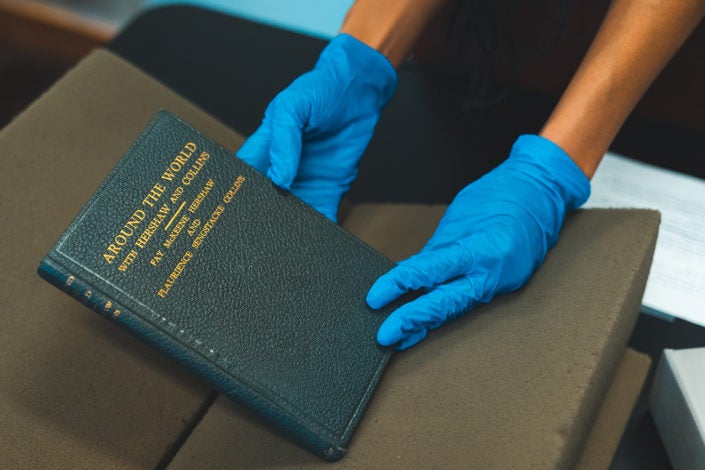
On display was Around the World with Hershaw and Collins, a book written in 1938 by two African American women, Flaurience Sengstacke Collins and Fay McKeene Hershaw. Despite limitations of the era, they traveled the globe. (Image credit: Andrew Brodhead)
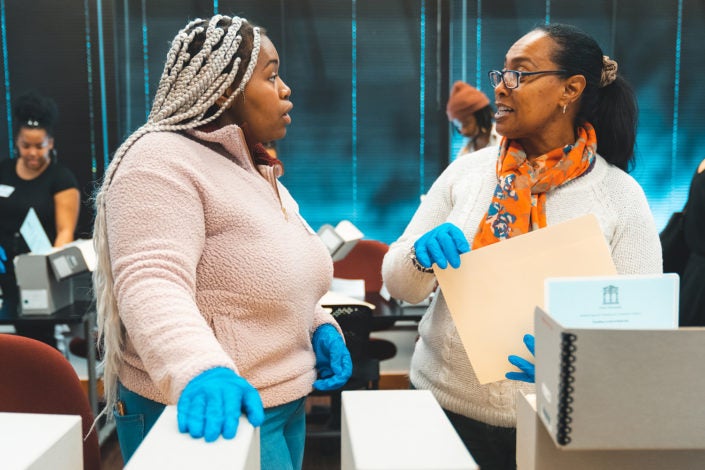
Students including Kiara Dunbar (pictured left) highlighted the personal experiences of important civil rights activists, where original material related to these women’s lives are represented in Special Collections. (Image credit: Andrew Brodhead)
Giving voice to others, and discovering one’s own
For Amiel Dixon, a psychology major and African & African American Studies (AAAS) minor, it was life-changing to learn about these women through original source material.
“You think of archives as just old and collecting dust,” Dixon said. “But actually looking in the archive and holding something they actually wrote, what they actually read, what they actually believed in, is just so amazing and you get so inspired by their work.”
For Dixon, the experience was also personally uplifting.
“Just by seeing the Black women throughout these archives and that I’ve learned about so far improved my confidence,” Dixon said.
